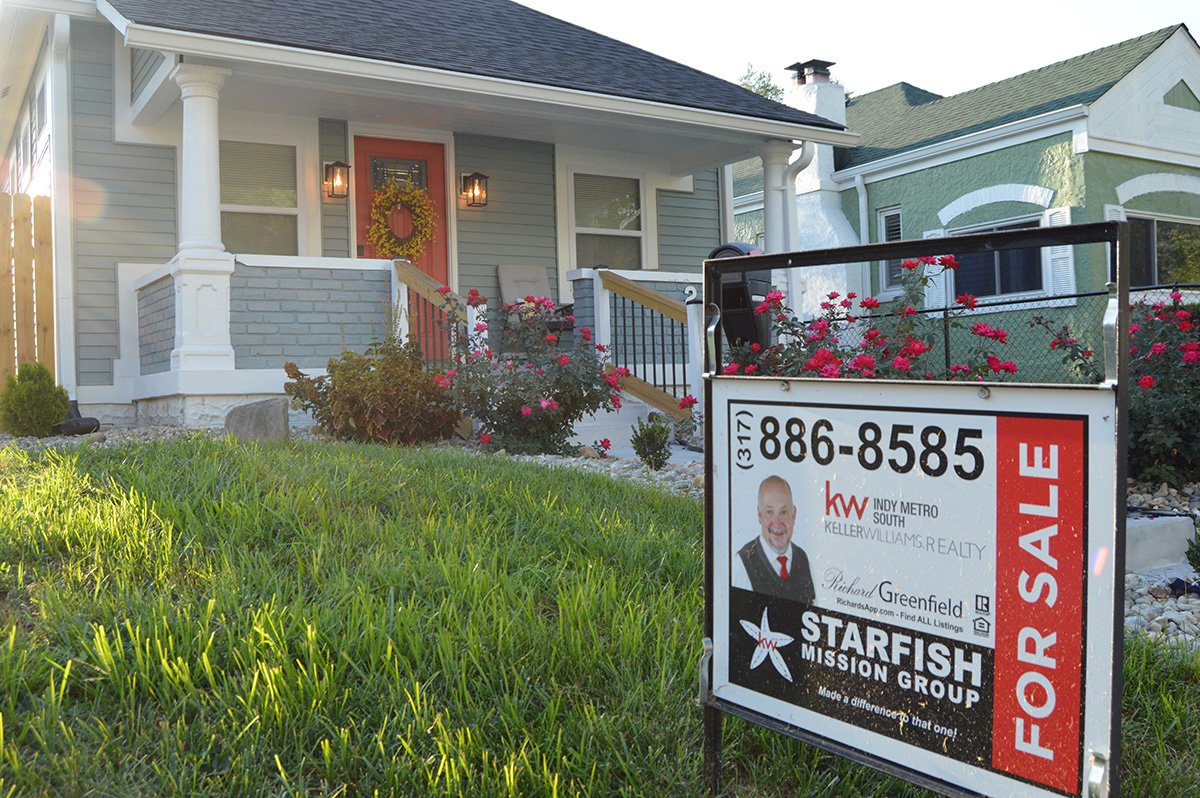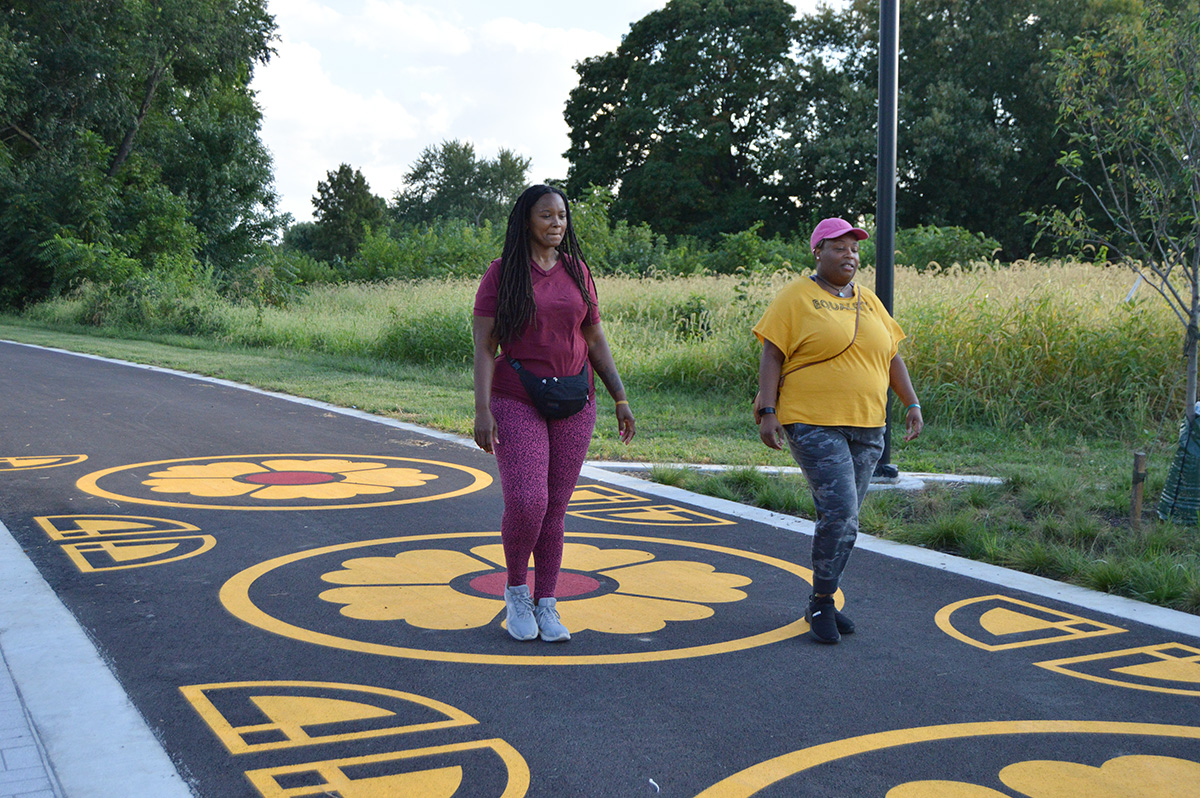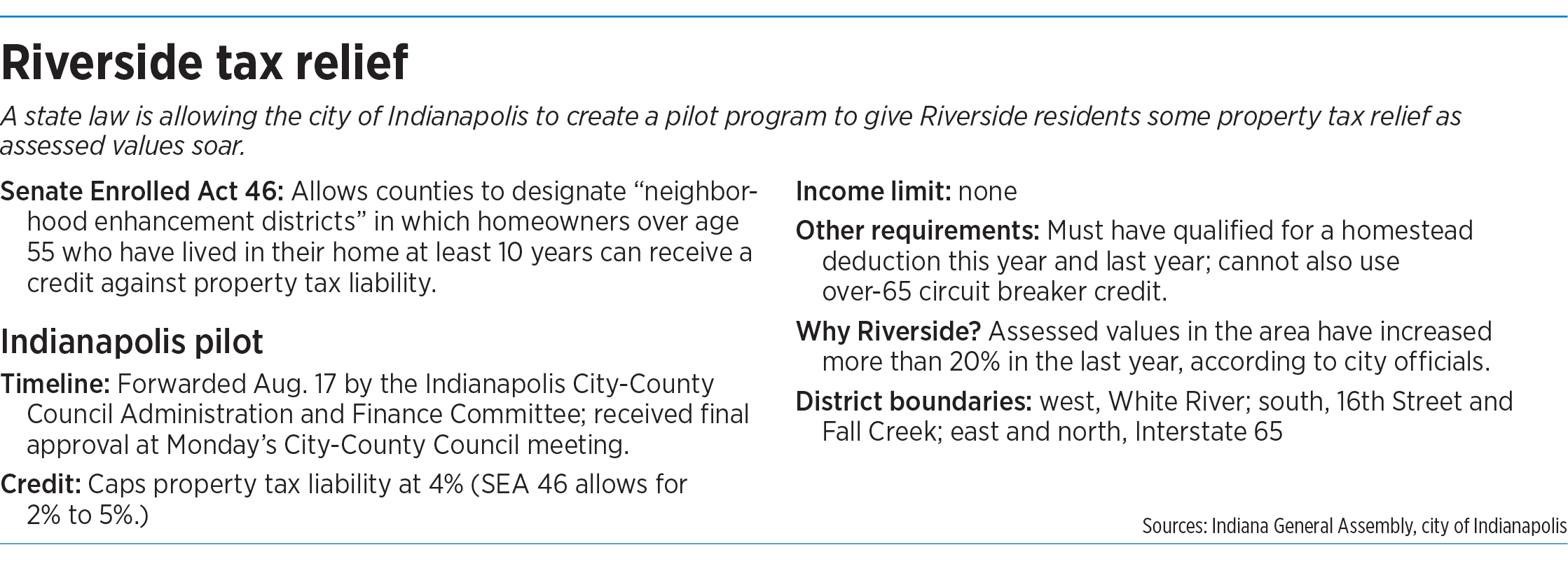Subscriber Benefit
As a subscriber you can listen to articles at work, in the car, or while you work out. Subscribe NowIngrid Lane, 55, has lived in her Riverside neighborhood home for nearly 20 years. She was shocked this year to see her property tax bill nearly double.
Her home sits just across the street from Riverside Regional Park. The 862-acre property that exists on both sides of the White River is seeing an investment of $12 million over the next several years from the city and Lilly Endowment.
Lane said the park improvements, which include the creation of the Taggart Memorial Amphitheatre and the Riverside Promenade trail, are making the neighborhood more fun and inclusive.
But she said there are also unwelcome consequences. According to public tax records, her home saw a $30,200 jump in assessed value this year, to $111,800. Her property tax bill nearly doubled, to $1,100. Nearby, a home sold for over $300,000.
“Is this going to be like a domino effect? Can I maintain it?” Lane said.

Residents like Lane have long been concerned about the neighborhood’s increasingly hot housing market and the increasing phone calls they get from investors wanting to buy their homes. Sometimes, she gets three to five calls daily.
A pilot program hoping to soften the blow of increasing tax bills will begin this year in Riverside. The pilot was made possible through a new state law that allows counties to designate neighborhood enhancement districts and determine to what extent a homeowner’s property tax liability should be limited.
The Indianapolis City-County Council approved a proposal on Monday creating the Riverside district and a tax credit for longtime homeowners in the neighborhood who are over the age of 55.
While property owners lauded the state and city action, some are concerned that it’s too late.
Residents began to see rising tax bills as early as 2015. Aleksandr Gifford, a former president of the Riverside Civic League and 23-year resident, said that’s when he began to see an increase in outside investors buying homes.
“We as a community could clearly see what was going to happen. As soon as somebody lit the fuse, Riverside was going to take off,” Gifford said. “It has the highest concentration of available residentially zoned lots in all of Indianapolis.”
Gifford said most residents affected by the increasing property tax bills have likely already been pushed out. But Lane is hopeful the credit will provide at least a bit of relief as she aims to send her teenage daughter to college while keeping her home.
“I just want to be able to make sure that I can maintain my home even after retirement,” Lane said. “And if it keeps doubling, you know, then I don’t know if I’ll be able to.”
The start of the pilot
At the opening of the annual Riverside Neighborhood Parade last weekend, an ecstatic, T-shirt-clad Vop Osili announced to his constituents that long-desired property tax relief was on the way.
“There is no other community in the entire city that had a greater jump in their property taxes than the Riverside neighborhood,” said Osili, president of the Indianapolis City-County Council.
The neighborhood saw assessed values increase more than 20%, according to city officials. Osili’s announcement of the pilot program was met with whoops and cheers.
Under the pilot, homeowners’ property taxes will increase no more than 4% going forward.
Purdue University economist Larry DeBoer examined the potential cost savings for one particular Riverside home. It had an assessed value in 2022 of $41,500 that increased 10% to $48,800 in 2023. Limiting that increase to 4% would have meant a property tax bill of about $326.50, down from the actual $352.78.
To be eligible, homeowners need to have turned at least 55 by Dec. 31 of the prior year; have resided in the house for 10 consecutive years; have qualified for the homestead deduction this year and last year; and own, be buying, or otherwise have a beneficial interest in the property. The over-65 circuit-breaker tax credit cannot be claimed at the same time.
City officials said 555 parcels in the area meet the 10-year eligibility requirements, but they have no idea how many of those homeowners meet the other requirements.
The credit would be applied from 2024 to 2027, when the law that created the credit sunsets.
Controller Sarah Riordan told a council committee the intention is to get through at least one tax cycle in the Riverside neighborhood, then consider expanding the credit to other areas. In his Aug. 14 budget speech, Indianapolis Mayor Joe Hogsett said he was “confident this program will prove successful and expand to other parts of the city in the future.”
Some residents likely also qualify for the over-65 circuit-breaker tax deduction. That deduction provides more tax relief but is available only to individuals with an adjusted gross income of $30,000 or less, or a combined household income of $40,000 or less and with a gross assessed property value of $200,000 or less.
Officials aren’t concerned about wealthy homeowners overusing the credit. Deputy Controller Abby Hanson told the council committee that just 13 parcels that fit the 10-year resident requirement have an assessed value of $200,000.

Lost revenue
The city and its overlapping tax units—like schools, libraries and townships—will lose money from the tax credit just like any shift in tax collection, DeBoer told IBJ. It’s possible the pilot program will test to see just how much money it could cost Indianapolis and other units that receive tax dollars.
“Trying to project how much revenue you would lose can’t be done, I would guess, with the existing database that they’ve got in the City-County Building because the existing database will not tell them how many homeowners are over 55,” DeBoer said.
The application for the tax credit will be available through the Marion County Auditor’s Office. It is currently being created and reviewed with state departments for approval, city spokesman Mark Bode wrote in an email to IBJ.
State Rep. Cherrish Pryor, D-Indianapolis, who sponsored the final version of the tax-credit legislation authored by Republican Indianapolis Sen. Jack Sandlin, said the move was long overdue.
Pryor introduced similar legislation annually for several years, but she said increased property taxes across the state helped other lawmakers become alert to a problem that sprouted in pockets of Marion County.
She previously worked in the real estate division of the Marion County Auditor’s Office. That work often involved helping people who saw drastic increases in their property taxes or even had their home up for a tax sale. That experience has motivated her work on the issue, she told IBJ.
“I’m glad [the law] finally happened,” Pryor said. “I wish, quite frankly, that we could have done it years ago so we could have helped more people.”
Rep. Vanessa Summers, D-Indianapolis, said in a statement that she is happy to see the Riverside neighborhood receive the tax relief, which she said will lower the threat of gentrification in the area.
“No one should have to worry about being priced out of their homes and neighborhoods by developers looking to make money off of expensive housing units. If we work to invest in our communities—meaning enhancing the quality of life, health outcomes and educational attainment—we can bolster economic development in our neighborhoods without the risk of gentrification.”

Gentrification concerns
The Fair Housing Center of Central Indiana has repeatedly raised the alarm about Indianapolis neighborhoods, like Riverside, seeing new developments that increase property values and push out Black residents.
A 2022 report found that, from 2010 to 2020, Riverside’s white, non-Hispanic population increased 105% while the neighborhood’s Black population decreased 17%. During that same period, homeownership in Riverside dropped by a third.
Alvin Sangsuwangul, head of Kheprw Institute’s affordable housing efforts, lives in the neighborhood. He recently received a mailer from a homebuyer that included a check for $47,000.
“It’s like, ‘Hey, this is our offer. We can activate this check. Call us at this number,” Sangsuwangul told IBJ.
The rising home values push out more than just homeowners, Sangsuwangul said. Renters also feel the pinch when rising tax costs are passed on to them. He said one neighbor was unable to renew her lease when the landlords instead wished to flip and sell the house.
The fair housing study also found that nearly 19% of single-family rental units in Riverside are estimated to be owned by out-of-state investors.
Several investments have made Riverside more attractive, like the park improvements and the addition of Herron Classical Schools, part of a group of Indianapolis Public Schools charters that recently began teaching kindergarten through high school.
“It’s a double-edged sword,” Sangsuwangul told IBJ. The area begins to be perceived as “safe enough” and “nice enough” for mostly white, upper-class individuals while longtime residents are forced to leave, he said. He traces this back to racial housing segregation and predatory lending, which prevented Black families from accruing and passing down capital.
For 55-year-old resident Lane, the concept of the legacy she leaves behind for her family remains a concern. What if rising property taxes push them out of Riverside?
“This is also a fear of mine, that when I pass away, that my children would not be able to afford the taxes here and would likely lose the legacy I’m building for them,” she said.•
Please enable JavaScript to view this content.





In the 1950s the Riverside area became increasingly black. And the majority were homeowners. By the mid1960s the area was almost entirely black. The interstate building boom severely impacted the area to the north and east but also led to generally decline in neighborhood quality and ‘flight’ of many to Washington and Pike Townships. Rentals increased and yhe vicious circle of decline continued.
However, Riverside Dr in particular and adjacent blocks did hold up reasonably well. Now, the area is gentrifying — meaning non-blacks have moved in and housing investment has increased. This is great. But protection of long-time homeowners is laudable and commendable.
One remembers about 20 years ago whe the world woke up to the fact that the old homes in the Meridian Street corridor and surrounding neighborhoods were not paying their fair share of property taxes (which was correct). So the city fathers raised the property taxes all in one year. This resulted in many older families having to sell the homes they have owned for many years because they could not afford the tax increase. Maybe this is different.
Doesn’t sound very different to me. With the way Indiana and Indianapolis is growing I don’t have much hope for these pilot programs. Everyone wants real estate here.